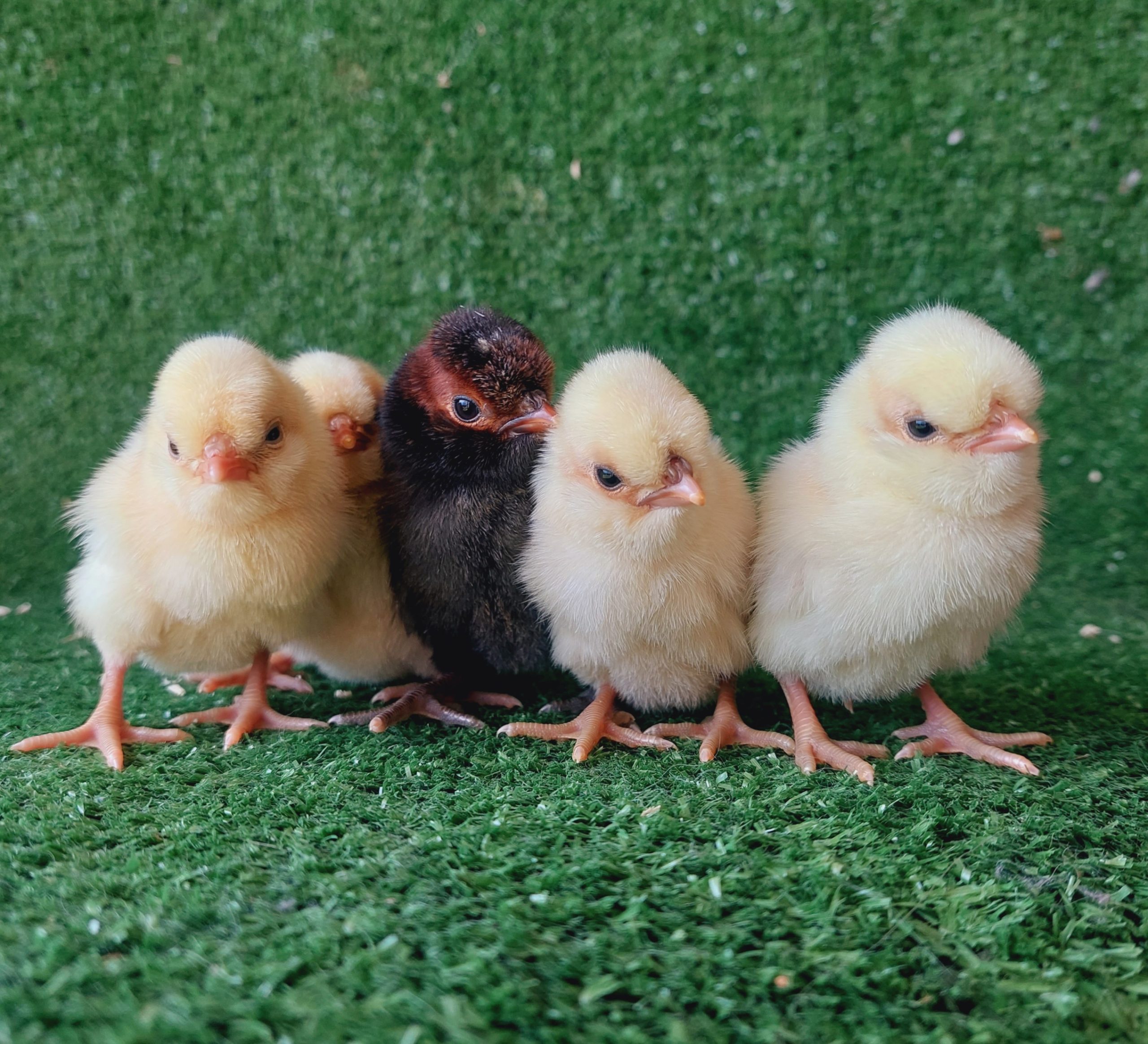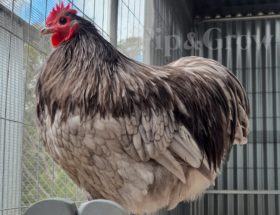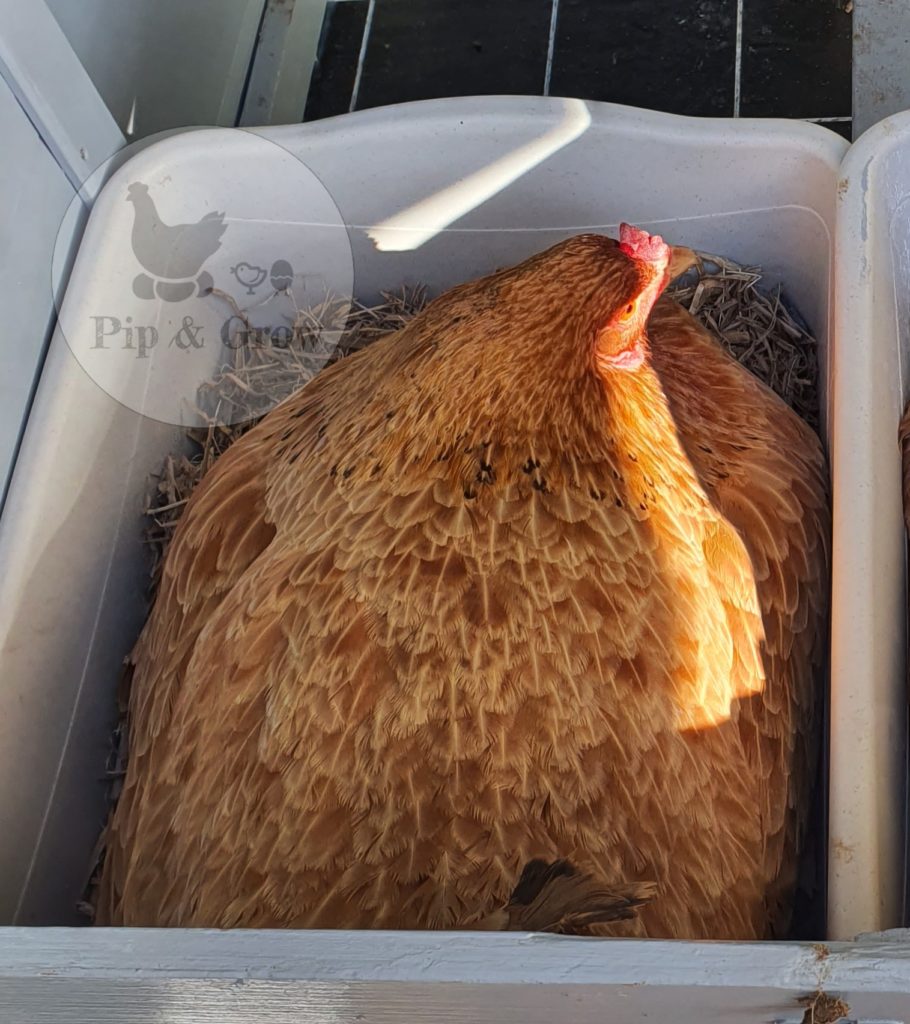
A broody hen is a hen that exhibits behavior characterized by a strong desire to sit on and hatch eggs. When a hen becomes broody, she will often spend extended periods of time in a nesting box, refusing to leave and showing signs of protectiveness over the eggs.
It’s important to understand that, a broody hen’s behavior is primarily driven by hormonal changes triggered by environmental factors, such as weather, season, and natural instincts related to reproduction and ensuring the survival of the species. While we may anthropomorphize and attribute human-like motivations to broody behavior, such as a desire to be a mother, the underlying cause is indeed rooted in biological and instinctual processes.
Signs of a broody hen include:
- Spending long periods of time in the nesting box, either sitting on eggs or even on empty nests.
- Becoming defensive or aggressive when approached, pecking or growling to protect her nest.
- Fluffing up her feathers, resembling a “puffer fish” in chicken form, and making continuous “bok bok” noises when forced to move out from the nest, and lingering around the nesting area.
- Resisting leaving the nest, even to eat, drink, or socialize with other flock members, and persistently returning to the nest regardless of interruptions.
So, what options are available when a hen becomes broody?
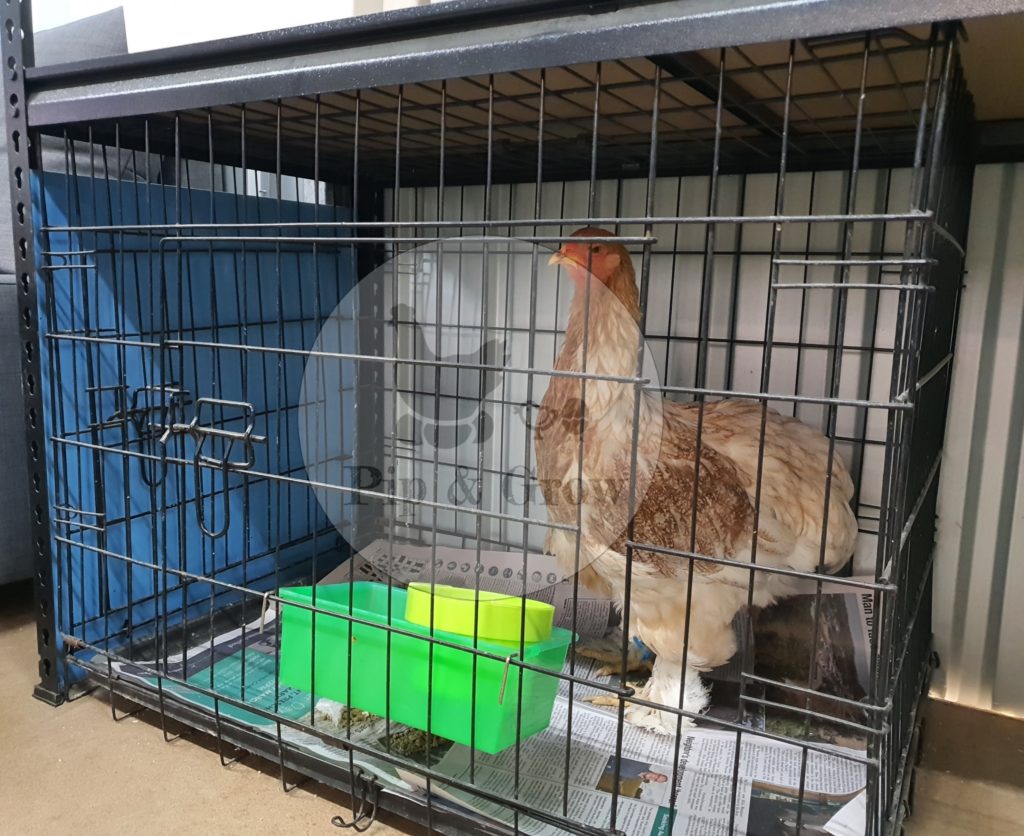
Option 1. Breaking Broodiness
If the keeper is not prepared to accommodate more chickens, it is advisable to break the broodiness of the chicken as soon as possible. This can help prevent the hen from continuing to exhibit nesting behavior and ensure that she resumes normal activities and behaviors within the flock.
When a hen becomes broody, she chooses a nest where she feels comfortable and safe to incubate eggs. To break her broodiness, the hen needs to be prevented from accessing her chosen nest.
- “Broody Jail” : Place the broody hen in a wire-bottomed cage or isolated area with good ventilation. A dog crate can serve this purpose effectively. Position the cage in a highly visible and public area, such as where you frequently walk by, to make the hen feel exposed.
- If the keeper have multiple pens or housing areas for your chickens, consider placing the broody hen with unfamiliar hen(s) in a new environment. For example, if a Silkie hen becomes broody, introduce her to a smaller pen with other breed hens of similar or slightly larger size (e.g., Polish or Bantam Orpington) where no nest box is available. The presence of new birds and surroundings can disrupt the broody hen’s sense of safety, often breaking the broodiness in less than a week.
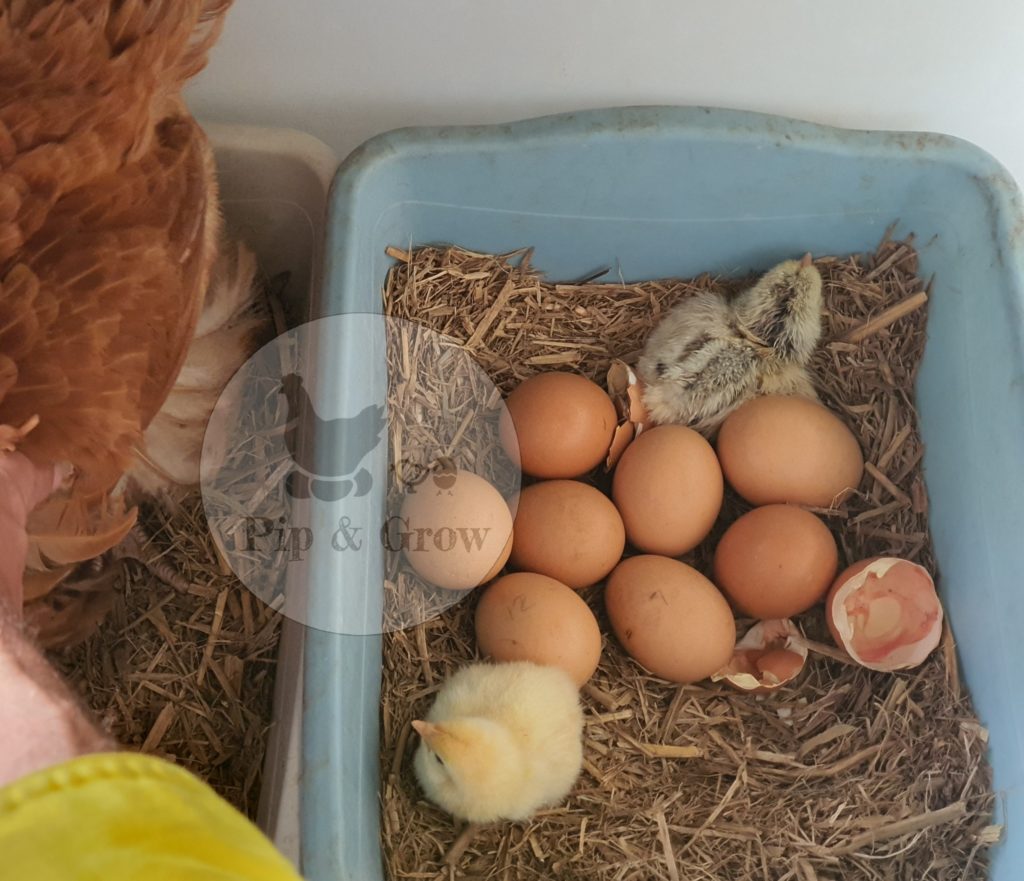
Option 2. Providing Fertile Eggs
If a hen becomes broody within the last 10-14 days and the keeper desires more chickens, offering fertile eggs is a suitable option. Most hens are proficient at incubation and will naturally tend to the eggs. However, it’s advisable to avoid giving fertile eggs to a hen that has been broody for over 2-3 weeks. This is because the hen would need to continue sitting on the eggs for about 3 weeks until they hatch, resulting in a total of 5-6 weeks of reduced feeding and activity, which can be taxing for the hen.
Read more about Broody hen hatching
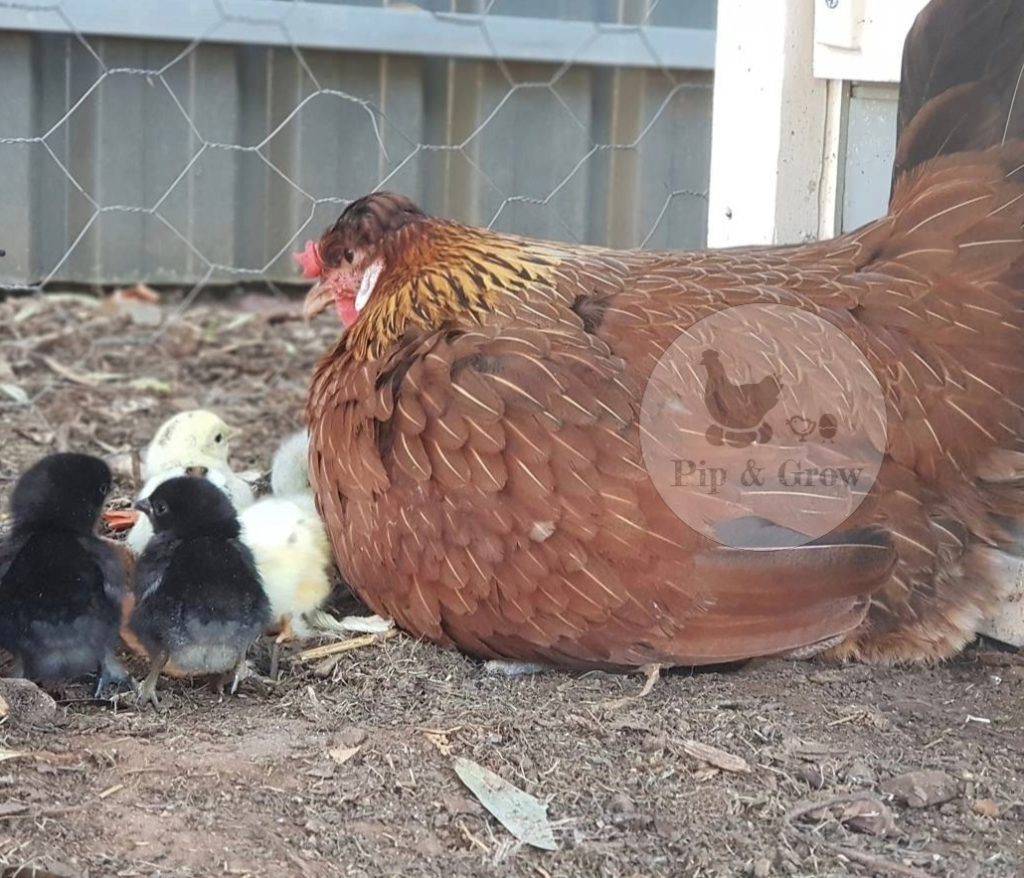
Option 3. Providing Day-Old Chicks
Offering day-old chicks is another effective option if the hen is confirmed to be broody, ideally after 4-5 days of displaying broody behavior. This method is particularly beneficial if the hen has been broody for several weeks, as it bypasses the 3-week incubation period. It’s best to introduce freshly hatched chicks to the broody hen, although chicks up to 10 days old can also be accepted in most cases. While most broody hens readily accept day-old chicks without any problems, it’s important to be aware that there is a rare possibility (about 1-2%) of rejection. Keepers should be prepared for this potential scenario, although it is uncommon.
Read more about how to introduce Dayold to a broody hen
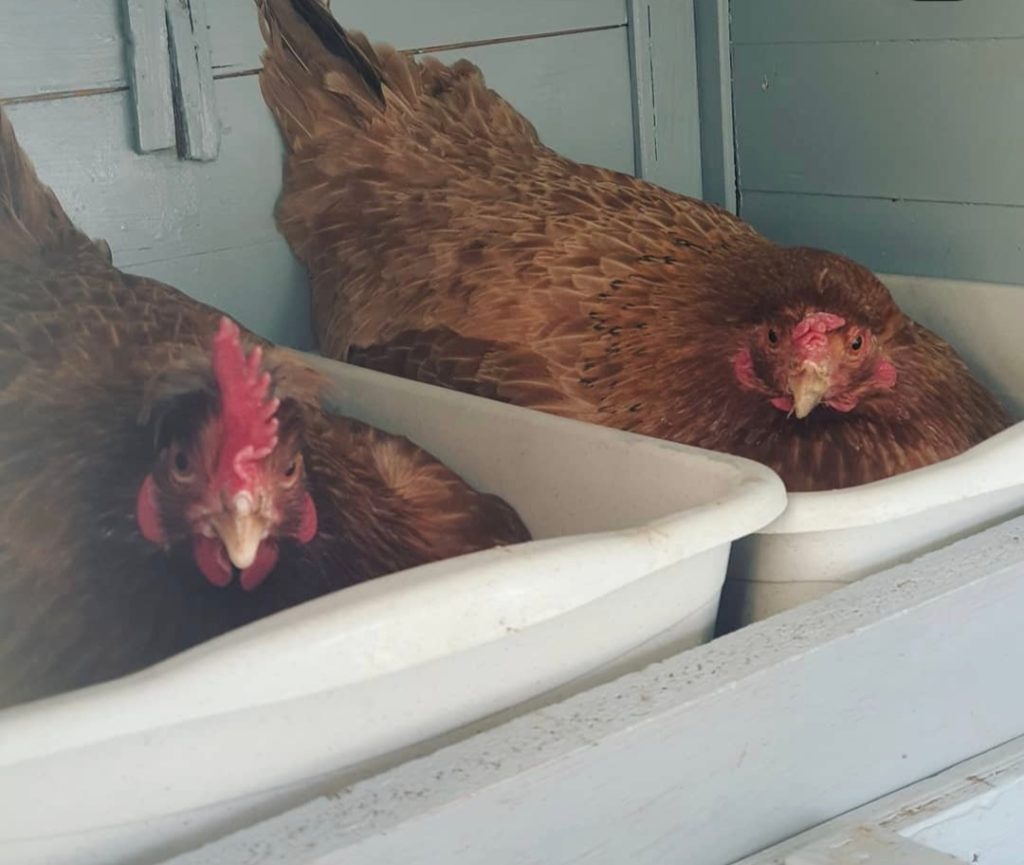
Dealing with the broodiness
Broody hens halt egg production while incubating eggs, which can significantly impact the overall egg yield of your flock. For those who rely on eggs for consumption or sale, a broody hen can lead to a reduction in available eggs.
However, the underlying concern extends beyond egg output. When hens enter a broody state, their primary focus shifts to incubating eggs. They take brief, purposeful breaks from the nest to eat, drink, and attend to their needs, minimizing their time away from the eggs. Extended periods of broodiness can result in nutritional deficiencies, weight loss, and potential health issues due to reduced food intake. Addressing broodiness promptly is crucial to safeguard the hen’s overall health and well-being. By intervening early, you can help ensure that the hen maintains proper nutrition and avoids potential health complications associated with prolonged broodiness.
